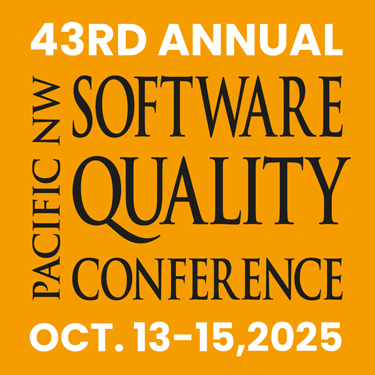Moss Drake
“Plus ça change, plus c’est la même chose.” -Jean-Baptiste Alphonse Karr
This quote roughly translates into English as “the more things change, the more they stay the same.” This is a common refrain among tech workers, especially software quality professionals.
While new technologies, new tools, and new ways of working are continually introduced, many feel like the same old issues continue to cause problems and friction in software development projects. In some ways this is true, but other issues have persisted and evolved over time.
The first PNSQC keynote in 1983 began with these words: “Most often when the relationship between the design process and software quality is cited, it is product design that comes to mind. However, software quality actually takes root — or fails to take root — during the project design process.”
Sound familiar, doesn’t it? Yet how many times have we had to restate this one way or another to management, teams, or even to ourselves as we undertake new projects?
How the Past Influences the Future
As we prepare for the 40th-anniversary conference, we’re taking time to reflect on the journey and evolution of software quality in the 20th and 21st centuries.
The Hitachi corporation says the evolution of quality has followed this path:
- From the 1920s through the 40s there was Quality Compliance. This involved companies realizing the need for quality control and learning about acceptance checking their products.
- The 50s, 60s, and 70s experienced the birth of Enterprise Quality. Groups introduced Zero defects frameworks and they began to use quality metrics & statistics for managing quality control.
- The era of Quality Data & Analytics lasted until the turn of the century. This included pervasive adoption of quality data collection in a way that led to tailored actionable insights.
Now, in the 21st century, we have Digital Quality, with new ways of refining quality, especially by mining consumer preferences and usage.
So, what are the new ways of refining quality? Some examples might be:
- Experimental design
- Predictive quality
- Smarter inspection systems
- End-to-end traceability
- Remote monitoring
But, really, that’s what PNSQC is about. Nobody knows all the new ways we are exploring software quality and feedback systems.
That’s why we ask you to get involved in the conference, either as an attendee or as a speaker.
Where We Go from Here
All of us are currently doing work to determine the future of quality. Our projects, teams, and culture all become examples of what to do (and not do) to produce a quality product.
Using the influential Malcom Baldrige National Quality Award criteria as a guide, here are some ways that companies and teams are evolving quality in new directions:
- Leadership. How upper management leads the organization, and how the organization leads within the community.
- Strategy. How the organization establishes and plans to implement strategic directions.
- Customers. How the organization builds and maintains strong, lasting relationships with customers.
- Measurement, analysis, and knowledge management. How the organization uses data to support key processes and manage performance.
- Workforce. How the organization empowers and involves its workforce.
- Operations. How the organization designs, manages and improves key processes.
- Results. How the organization performs in terms of customer satisfaction, finances, human resources, supplier and partner performance, operations, governance, and social responsibility, and how the organization compares to its competitors.
At PNSQC, we know that the DNA of every company is different. While we might have similar problems, only you can describe your discoveries and experience in evolving quality.
Take a moment and inventory your ideas and submit a technical paper proposal to PNSQC 2022 today.
